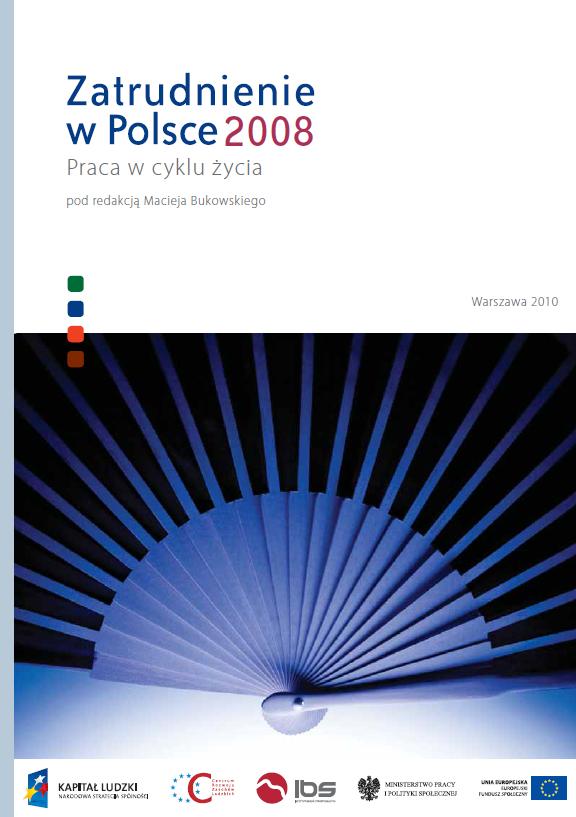It is with great pleasure that we present the fourth edition of Employment in Poland. The report, commissioned by the Department of Economic Analyses and Forecasts of the Ministry of Labour and Social Policy, has been prepared by a consortium headed by the Insti- tute for Structural Research as part of a project coordinated by the Human Resources Development Centre. In this edition we address the issue of work across the lifespan which, in the face of the ongoing demographic changes and population ageing, is a key problem for the future of Poland and Europe. We discuss the impact of demographic changes on the labour market and examine what policy adjustments are required in order to counter the negative effects of population ageing on the economy and to ensure the stability of the age structure in Poland in the long term.
Part I discusses the macroeconomic aspects of demographic changes in Poland, also in the light of the past and future reforms of the pension system. Long-term projections (up to 2060) of labour market indicators and basic macroeconomic variables are the core element of this Part. The forecasts demonstrate the various possible institutional responses to problems caused by population ageing in the fields of labour market policy, social policy and immigration policy. They also provide a macroeconomic background to the remaining parts of the report.
In Part II we focus on the marginal age groups of labour market participants, i.e. youth below 24 and the elderly above 54. Their situ- ation is analysed against the age group consisting of prime-aged individuals. We analyse their relative wages, labour market indicators as well as present the results of an experiment investigating the scale of age and gender discrimination in the Polish labour market. It can be observed that the improvement of the labour market position of young people in Poland is accompanied by the relatively wor- se situation of the elderly, which can be partly explained by discriminatory behaviours of employers. The recognition of the obstacles that the analysed age groups encounter in the labour market is crucial for shaping public policies geared at increasing their labour market participation.
Part III adopts a comparative approach to present the labour market positions of men and women. The analysis of mutual relations be- tween institutions, cultural background, labour market situation of women and demographic developments is an important element of Part III. It is also in this section that we discuss a mix of public policies which will best counteract gender discrimination in the labour market, improve male and female participation and raise the fertility rate.
Part IV is less concerned with demography, focusing instead on individual choices related to education and enhancing one’s skills across a lifespan. We argue that despite high educational attainment at tertiary level, Poles’ involvement in lifelong learning is very limited. This is likely to form an obstacle to the quick absorption of technological progress and impede adaptation to the increasing expectations of employers. At the same time, low lifelong learning participation in Poland can be largely blamed on public policies, which are sufficient in scope but improperly shaped.
Employment in Poland 2008 concludes with recommendations presenting a coherent vision of a public policy which would adequately respond to demographic challenges and labour market problems looming on the horizon.

Warsaw School of Economics, Committee on Demographic Studies – Polish Academy of Sciences, GGP Council of Partners

